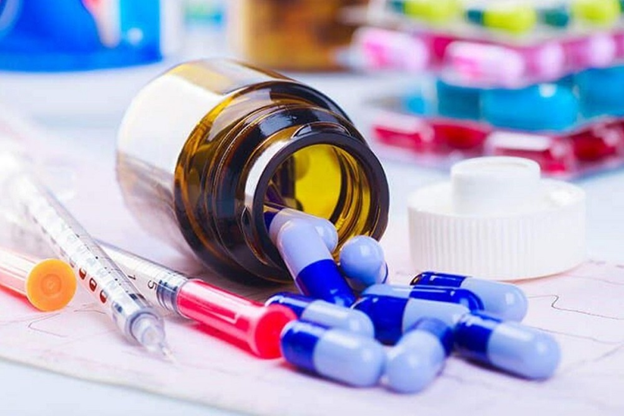In the pharmaceutical industry, precision and reliability are paramount. Among the many logistical challenges the sector faces, maintaining temperature-sensitive medications within strict limits is one of the most critical.
This is where cold room logistics play a pivotal role—ensuring that from the moment a product is manufactured until it reaches the patient, its efficacy, safety, and compliance are never compromised.
What Are Pharmaceutical Cold Rooms?
Pharmaceutical cold rooms refer to the infrastructure, processes, and technologies used to store and transport temperature-sensitive drugs and biological products within a controlled cold chain environment. Typically, these cold rooms are maintained at temperatures between 2°C and 8°C, though some products may require sub-zero or cryogenic conditions.
Cold room logistics are vital for preserving the integrity of vaccines, insulin, biologics, blood plasma, gene therapies, and many other critical treatments that degrade or lose potency outside specific temperature ranges.
Key Components of Pharmaceutical Cold Room Logistics
1. Cold Room Storage Facilities
Cold rooms are specially designed, temperature-controlled environments equipped with:
- Precision temperature and humidity controls
- Automated monitoring systems with alerts for any deviations
- Redundant cooling systems to prevent failures
- Good Distribution Practice (GDP) and Good Manufacturing Practice (GMP) compliance
2. Refrigerated Transport Vehicles
Cold chain logistics rely on specialized reefer trucks, air cargo containers, and insulated containers. These vehicles ensure consistent temperature maintenance during:
- Distribution from manufacturing sites to central warehouses
- Deliveries to hospitals, pharmacies, and clinics
3. Packaging Solutions
Advanced cold chain packaging—including gel packs, phase-change materials, and vacuum-insulated panels—plays a vital role in:
- Maintaining internal temperatures during transit
- Preventing contamination and physical damage
- Ensuring sustainability with reusable packaging options
4. Real-Time Monitoring Systems
Internet of Things (IoT) technology enables continuous tracking of temperature, humidity, and location throughout the cold chain. Cloud-based dashboards and GPS alerts allow logistics teams to:
- Respond quickly to deviations
- Optimize routes and schedules
- Ensure regulatory compliance with data logging
Challenges in Cold Room Logistics
Despite technological advancements, several challenges remain:
• Infrastructure Gaps
Many regions, especially in developing countries, lack adequate cold storage facilities or reliable electricity supplies, threatening the global distribution of life-saving drugs.
• High Operational Costs
Maintaining cold rooms and refrigerated transport involves substantial energy consumption, equipment investment, and skilled labor, contributing to high costs.
• Regulatory Compliance
Global logistics operations must comply with varying regulations, such as:
- FDA and USP standards in the U.S.
- EU GDP guidelines in Europe
- WHO Good Storage and Distribution Practices
• Risk of Temperature Excursions
Even brief deviations can compromise product quality, leading to:
- Product recalls
- Wasted inventory
- Patient safety risks
Best Practices for Pharmaceutical Cold Chain Management
1. Validation and Qualification
Every component of the cold chain—from cold rooms to packaging—should undergo installation, operational, and performance qualification (IQ/OQ/PQ) to ensure reliability.
2. Standard Operating Procedures (SOPs)
Establishing and regularly updating SOPs for handling, storage, and transport helps ensure consistent operations and staff accountability.
3. Training and Awareness
Staff must be trained in:
- Cold chain principles
- Emergency response protocols
- Correct handling of cold chain breaches
4. Preventive Maintenance
Regular calibration and servicing of cold rooms, sensors, and vehicles is vital to avoid breakdowns that could endanger product integrity.
5. Data-Driven Decision Making
Leverage real-time data and analytics to:
- Predict demand and reduce overstocking
- Identify bottlenecks
- Improve efficiency and traceability
Future Trends in Cold Room Logistics
• Automation and AI
Machine learning models can predict temperature fluctuations and optimize logistics routes for time and cost savings.
• Blockchain for Traceability
Blockchain technology ensures tamper-proof records of product handling, enhancing transparency and regulatory trust.
• Green Cold Chains
Sustainability is driving innovations in solar-powered cold rooms, eco-friendly refrigerants, and biodegradable packaging materials.
Conclusion
Pharmaceutical cold room logistics serve as the invisible backbone of the global healthcare system—working silently to protect the efficacy of life-saving medications. In a world increasingly dependent on complex biologics and personalized medicine, investing in robust cold chain infrastructure isn’t just about compliance—it’s about ensuring every patient receives the care they deserve, exactly as it was intended.
From manufacturer to patient, cold chain logistics don’t just move products—they safeguard health, one degree at a time.
You may also like
-
Scalp Micropigmentation: Transforming Lives One Hairline at a Time
-
A Beginner’s Guide to Acupuncture: Tools, Techniques and Safety Tips
-
The Emotional Impact of a Mommy Makeover: Rediscovering Confidence Inside and Out
-
How to Read a Peptide Certificate of Analysis (CoA) for Research
-
Refresh Your Face with Juvederm


